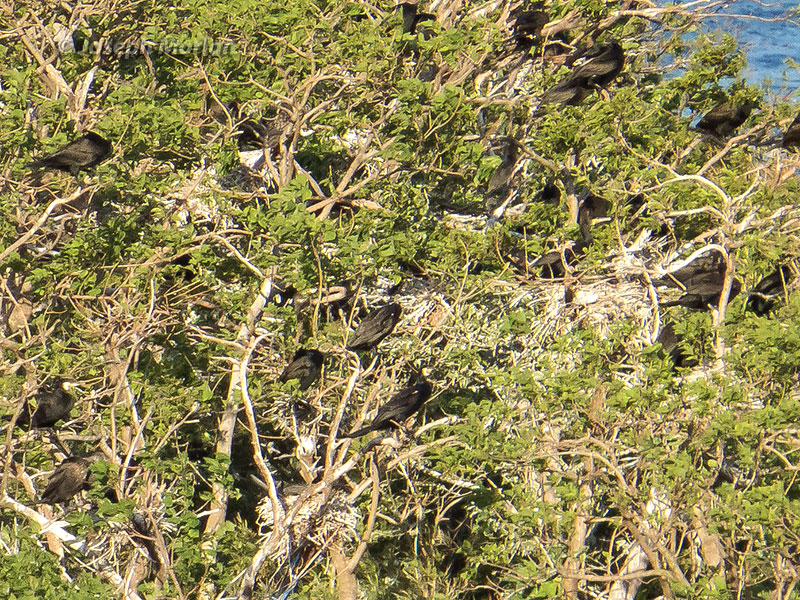

Note the extensive white face patch extending well above the eye in the upper photo which helps distinguish these Japanese Cormorants (often called Temminck's Cormorants) from the similar Great Cormorant (Phalacrocorax carbo hanedae). Both species nest in Tokyo Bay but Japanese Cormorants are primarily a winter visitor mostly gone by May. It is possible both species are in these photos Here are comments by Mr. Suzuki, the head of WBSJ Kanagawa kindly translated by Masami Yoshimura:
The north-east side of Sarushima is cliff, and evergreen trees such as Machilus thunbergii grow on the cliff. Approximately 500 Temminck's Cormorants roost on the cliff and trees during winter. Roughly a hundred Pelagic cormorants also roost on the cliff, but they do not perch on the trees.
Temminck's Cormorants perching on trees is rather uncommon, but they do at Sarushima. When Mr. Suzuki, the head of WBSJ Kanagawa was counting cormorants in the 1980s, Temminck's were already roosting on trees. They also perch on thin branches. As far as Mr. Suzuki knows, a small number of Great Cormorants have been seen among the Temminck's and Pelagic cormorants, but does not know the situation this year.
If many cormorants are seen at Sarushima in May, there is a possibility that Great Cormorants have established a colony there, but if you have just seen the cliff and trees gone white with cormorants' droppings, that can be from the winter.
The number of Temminck's Cormorants remaining at Sarushima around beginning of May has not been checked, but a small number of juveniles and adults not fit for migration (eg. with wing injuries, etc.) seem to remain and spend the summer.
As a conclusion, and based on Mr. Suzuki's experiences, he feels cormorants you saw are more likely to be Temminck's.